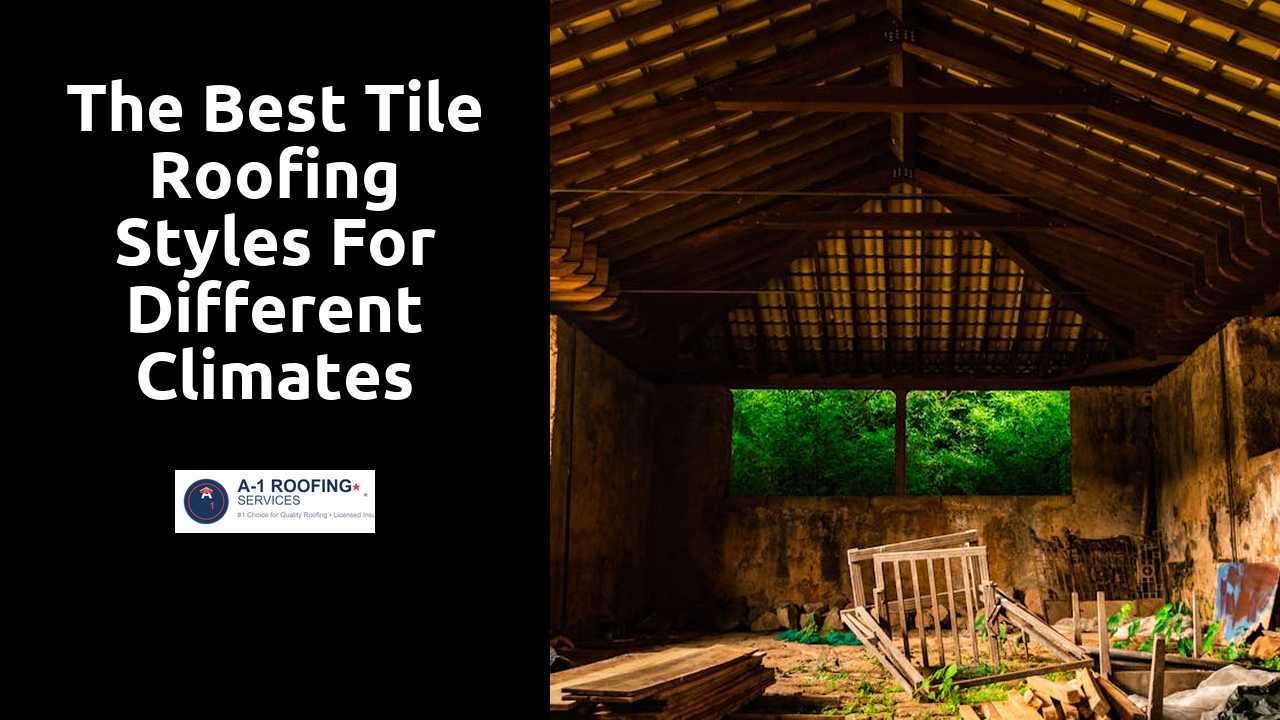
The Best Tile Roofing Styles for Different Climates
Table Of Contents
Flat Tile Roofing Options
Flat tile roofing is a popular choice for homeowners seeking a durable and aesthetically pleasing option. This style consists of flat rectangular tiles that can be made from various materials, including clay, concrete, and even synthetic options. Each material offers distinct advantages, with clay tiles often praised for their longevity and resistance to fading. Concrete tiles, on the other hand, provide strength and versatility, easily mimicking other materials while being cost-effective.
The installation of flat tile roofs requires careful consideration of the pitch of the roof and local climate conditions. This roofing style performs exceptionally well in warmer climates, where the flat surface can help retain coolness while reflecting sunlight. In areas prone to heavy rainfall or snow, ensuring proper drainage is critical to prevent water accumulation. Additionally, flat tiles can withstand high winds, making them suitable for coastal regions or places with extreme weather patterns.
Click here for additional info.
Ideal Use Cases in Various Climates
Flat tile roofing is particularly well-suited for regions with minimal snowfall and moderate rainfall. Its smooth surface allows for efficient water drainage, reducing the risk of leaks and structural damage over time. When applied in dry or arid climates, these tiles can reflect sunlight effectively, helping to maintain cooler temperatures within the home. Furthermore, they tend to require less maintenance compared to other roofing materials, making them a practical choice for homeowners seeking durability.
In contrast, flat tile roofs face challenges in areas prone to heavy snow or severe storms. The design must be meticulously engineered to handle the weight of accumulated snow and ice. In regions experiencing high winds, choosing interlocking tile systems can enhance roof stability. Their design minimizes the likelihood of tiles being lifted or damaged, ensuring that homes remain secure regardless of weather conditions. Selecting the right roofing style based on local environmental factors is essential for long-term performance and protection.
Interlocking Tile Systems
Interlocking tile systems have gained popularity for their ability to provide superior protection against harsh weather conditions. These tiles fit together seamlessly, creating a barrier that effectively resists wind uplift and water infiltration. The design not only enhances structural integrity but also allows for easier installation, making them an appealing choice for both contractors and homeowners.
The versatility of interlocking tiles makes them suitable for various climates, particularly in areas prone to storms or heavy rainfall. Their unique design mitigates the risk of tiles being dislodged during extreme weather events. Additionally, this roofing style can accommodate different materials, such as clay or concrete, allowing for aesthetic variety while maintaining practical benefits.
Enhancing Weather Resistance
Weather resistance is crucial for any roofing material, especially in areas prone to extreme weather conditions. Interlocking tile systems provide enhanced protection due to their unique design, which minimizes the risk of water infiltration. This type of roofing effectively channels rainwater away from the seams, reducing the likelihood of leaks. Additionally, many interlocking tiles are engineered to withstand high winds, ensuring they remain intact during storms.
Another significant advantage of tile roofing lies in its natural resistance to elements such as fire and decay. Many clay and concrete tiles can withstand harsh sunlight and resist fading or brittleness, making them ideal for areas with high UV exposure. This durability ensures that the roof maintains its structural integrity and appearance over time, even in climates that experience severe temperature fluctuations. Selecting the right tile roofing style can lead to long-term benefits in both maintenance and overall property protection.
Lightweight vs. Heavyweight Tile
When selecting tile roofing, the weight of the materials can significantly influence the choice. Lightweight tiles, such as those made from concrete or synthetic materials, are easier to handle and install. Their reduced mass means they place less stress on the building's structure, making them a suitable option for homes with less robust frameworks. This type of tile often performs well in milder climates where heavy snowfall or strong winds are not prevalent.
Heavyweight tiles, commonly crafted from clay or natural stone, offer substantial durability and wind resistance. These robust materials are ideal for regions experiencing extreme weather events, such as hurricanes or heavy rain. The increased weight contributes to superior thermal mass, which can help regulate indoor temperatures. Homeowners in areas with significant temperature fluctuations might find heavyweight tiles advantageous for energy efficiency and longevity.
Choosing Based on Local Conditions
When selecting tile roofing, the weight of the material plays a crucial role that varies by region. In areas prone to heavy snowfall or strong winds, heavyweight tiles offer enhanced durability and stability, providing a robust barrier against harsh weather conditions. Conversely, lightweight tiles may be better suited for regions with lower weather extremes or those that experience frequent seismic activity. They provide flexibility without overburdening structures and can simplify installation.
Local climate factors also influence the choice of tile material. For instance, coastal areas experiencing high humidity and salt exposure benefit from tiles specifically designed with corrosion resistance. In contrast, regions with high temperatures require materials that reflect heat, thereby improving energy efficiency. Understanding these local conditions allows homeowners to select the appropriate tile that balances functionality with aesthetic appeal.
Related Links
Common Misconceptions About Tile Roofing ExplainedEco-Friendly Benefits of Using Tile Roofing Materials